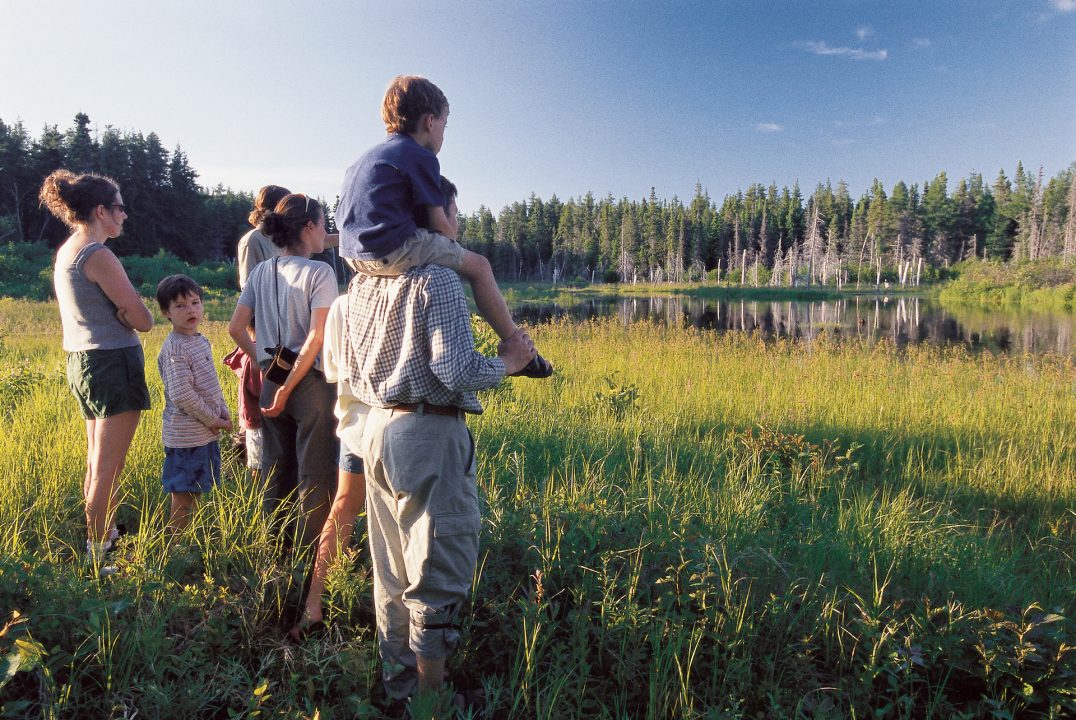The Huttopia world
“To protect nature, you have to make it accessible”
Interview with Raymond Desjardins, former CEO of SEPAQ (Société des Etablissements de Plein Air du Québec): To protect nature, you have to make it accessible.
The Huttopia world
Interview with Raymond Desjardins, former CEO of SEPAQ (Société des Etablissements de Plein Air du Québec): To protect nature, you have to make it accessible.
In the late 90s, the Government of Quebec decided to rethink the development and operation of parks in the Canadian province. A decision that would revolutionise the role of protected areas in Quebec’s economic and tourism landscape. We spoke to Raymond Desjardins, former CEO of la SEPAQ (Société des Etablissements de Plein Air du Québec), the agency of the Government of Quebec that manages parks and wildlife reserves.
At the time, protected areas were not seen as drivers of economic development in Quebec’s regions. There was a clash between environmental objectives and economic development. Many regional organisations saw the parks as untapped space due to under-funding, low visitor numbers and a lack of vision. This issue was even more significant considering the size of the parks, some of them covering over 1,000 square kilometres! The government’s goal was therefore to use the parks to attract tourists into the province, while also reinforcing their environmental role, so that they would contribute to job creation and the economic development of the regions.
First, the government assigned the responsibility for this matter to a crown corporation, SEPAQ. This type of management, much more flexible than a ministry, helped to better meet customer service requirements. In this model, the ministry creates the laws and government policies, and the crown corporation handles management and development. We established high quality standards for all the parks. In parallel, the government changed the law to turn all of our provincial parks into national parks.

A national park has a higher level of protection. This change in status therefore created an obligation for us… And also helped to raise our profile.
Most importantly, national parks are protected areas with a comprehensive zoning system, which determines what can and cannot be done in each sector of the park. The categories range from the full preservation zone, the equivalent of Quebec’s heavily protected ecological reserves, to the service zone, where infrastructure can be built (parking, visitor centres, etc.), with the preservation zone (the majority of a park) and the ambience zone in-between. This zoning system enables public access to the site and sets out the conditions for this access.
It’s on this basis that we have developed activities, services and accommodation. This approach enabled us to increase the number of visitors from 2 million to more than 4 million in less than 5 years.
I firmly believe that to protect nature, you have to make it accessible. Ensuring access to nature helps to make citizens protectors of their territories. We have therefore invested heavily in activities and educational programmes, with naturalists responding directly to visitors’ questions.
We have also based development decisions on the advice of the preservation teams. For example, when you build a simple path, you accept that you will be impacting a piece of the natural environment, but in a judicious way, because you can reduce this impact by following scientific opinion when deciding the route. But most importantly, the benefit is enormous: this path will allow people to get out into nature, to soak it up and to better understand the importance of the natural world around them.
We had to keep adapting the activities and services offered as customer needs changed: walking, cross-country skiing, snowshoeing, fat bikes, etc. The idea has always been to make life easier for people so that they come to the parks and become their best ambassadors. The national parks are now major assets for Quebec’s tourism industry, drawing people into the province. In some regions, the parks are among the biggest local employers.
We quickly realised that the popularity of traditional camping was dwindling. People loved the experience but they found it too complicated because of the equipment and time that camping required… Quite simply, consumer habits were changing.
It was around the same time that Céline and Philippe Bossanne contacted us to tell us about their Canadian Tent, inspired by the tents that trappers used to put up in our forests. SEPAQ and Huttopia shared the same philosophy. We established a business partnership, and Huttopia was able to adapt its tent to the specific conditions in Quebec. A few months later, these French tents were set up in several of our parks. They found instant success and several hundred Huttopia tents were put in place across the whole network. This partnership enabled us to launch an innovative and original product that perfectly met the expectations of North American consumers.
Discover...
The Huttopia world
How about a holiday reconnecting with nature?
The art of camping
5 ideas for ‘green’ camping this summer
The art of camping
3 tips for a successful camper van trip